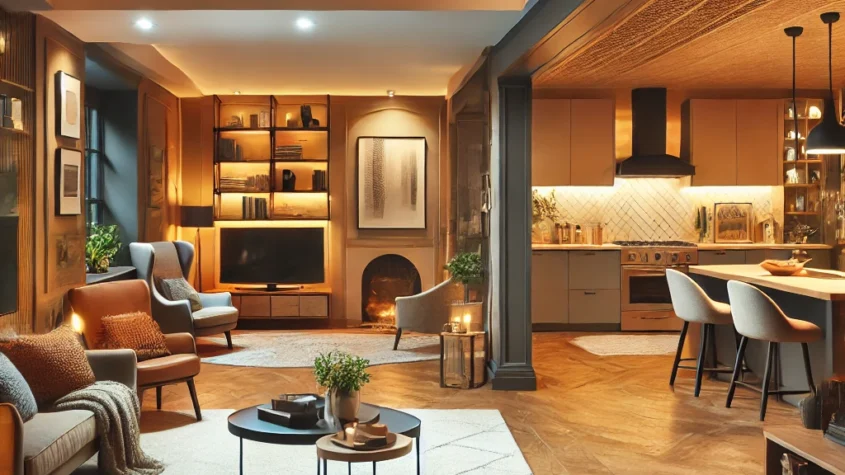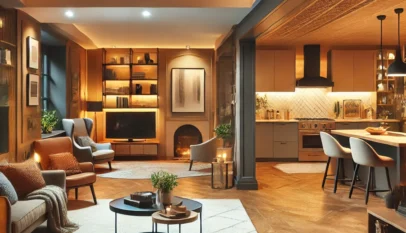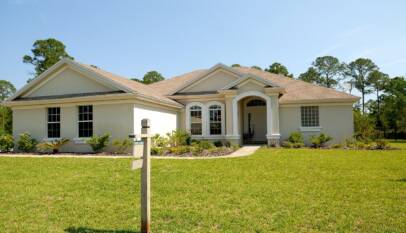Designer Kitchen Cabinets: Elevate Your Home’s Aesthetics and Functionality
Designer kitchen cabinets elevate the aesthetic and functionality of any kitchen space. They combine style, durability, and personalized design to meet individual needs while providing ample storage solutions. With numerous materials, colors, and finishes available, homeowners can create a kitchen that reflects their unique taste and enhances their home’s value.
Choosing designer cabinets involves understanding the balance between form and function. Quality craftsmanship ensures not only visual appeal but also longevity and efficiency in daily use. This investment pays off in the long run, as well-designed cabinets can withstand the rigors of cooking and family life.
Incorporating designer kitchen cabinets allows for a seamless blend of elegance and practicality. Homeowners can explore trends that suit their preferences, from modern to classic styles. This flexibility makes it easier to achieve a dream kitchen tailored to both lifestyle and design aspirations.
Essentials of Designer Kitchen Cabinets
Designer kitchen cabinets are characterized by their quality materials, color schemes, and thoughtful hardware selections. These elements not only enhance functionality but also contribute to the overall aesthetic of the kitchen space.
Material Selection
Choosing the right materials is crucial in the creation of designer kitchen cabinets. Common options include:
- Wood: Solid wood, plywood, and veneered options offer durability and timeless beauty. Popular woods include maple, oak, and cherry.
- MDF (Medium-Density Fiberboard): This engineered wood product is smooth and can be painted, making it ideal for modern designs.
- Particleboard: Often more budget-friendly, it can serve well when laminated or used for less frequently accessed cabinets.
Each material presents unique benefits and drawbacks in terms of cost, maintenance, and visual appeal. Selecting a sustainable, high-quality material ensures longevity and performance.
Color and Finish
Color and finish significantly influence the style of designer kitchen cabinets. Popular color choices range from classic whites and grays to bold hues like navy and emerald green.
- Matte Finishes: These offer a modern and sophisticated look, often hiding fingerprints and smudges better than glossy finishes.
- Glossy Finishes: These create a bright and reflective surface, adding depth to small spaces, but may require frequent cleaning.
Textures also play a role; textured finishes, like wood grains or soft-touch, can add character. The choice of color and finish should complement the overall kitchen design and personal taste.
Hardware Choices
Hardware selection enhances both functionality and aesthetics. Key types of hardware include:
- Cabinet Handles and Knobs: Options vary from sleek, modern styles to vintage-inspired pieces, influencing the cabinet’s overall look.
- Hinges: Concealed hinges offer a clean appearance, while exposed hinges add vintage charm. Both types should facilitate smooth operation.
- Pull-Out Systems: These add convenience and ease of access for deeper cabinets.
Choosing quality hardware not only accentuates the design of cabinets but also improves usability. The right combination can transform ordinary cabinets into a cohesive design feature.
Planning and Customization
Effective planning and customization lay the groundwork for achieving a designer kitchen that meets specific needs and preferences. This process involves optimizing the layout, incorporating functional features, and keeping up with current design trends.
Layout Optimization
Optimizing the kitchen layout is crucial for both usability and aesthetics. An efficient layout should streamline workflow while maximizing space. The three primary kitchen styles—**U-shape, L-shape, and galley—**each serve different needs.
- U-shape: Ideal for larger spaces, this layout allows for multiple work zones.
- L-shape: Suitable for smaller kitchens, enabling the integration of dining or seating areas.
- Galley: Best for narrow spaces, with symmetrical pathways for enhanced functionality.
Careful consideration of the placement of appliances, sinks, and cabinets can enhance functionality and movement efficiency.
Functional Features
Incorporating functional features increases the kitchen’s usability and convenience. Customization can include specialized storage solutions such as:
- Pull-out shelves: Easy access to pots and pans.
- Lazy Susans: Efficient use of corner spaces.
- Drawer dividers: Organized storage for utensils.
Additionally, modern appliances can be integrated seamlessly. Features like built-in microwaves or under-cabinet lighting enhance functionality while maintaining a sleek aesthetic. Focused investment in these details can transform a kitchen into an efficient workspace.
Design Trends and Innovation
Staying current with design trends can elevate a kitchen’s appeal. Popular innovations include the use of natural materials like reclaimed wood and stone for a rustic touch.
Color schemes such as muted tones or bold contrasts are prevalent in cabinetry. Open shelving offers a contemporary feel, allowing personal items to be displayed.
Smart technology is also on the rise, with features like smart faucets and automated lighting systems. These trends reflect a growing desire for personalization, efficiency, and environmental consciousness in kitchen design.
British Virgin Islands Company Registry Explained: Key Facts and Procedures
The British Virgin Islands company registry is a centralized system that maintains detaile…














